 |
 |
Our enthusiastic and extremely knowledgeable perennials team is here to answer your questions and help you choose the best perennials for your situation. There’s always something in bloom for sun, shade, butterflies, birds or deer resistance as well as a variety of bulbs for your space.
Stroll through our time-tested favorites and introduce yourself to the newest varieties. We garden with perennials too; we love them and it shows!
|
39 found, showing page 1 of 3
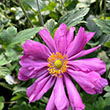
Pink blooms with golden-yellow filaments in the center. Mounding habit. USDA 5-8
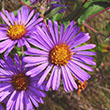
Violet or lavender-pink blooms provide nectar for pollinators. USDA 4-8
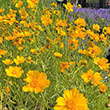
Height: 18 inches
Spread: 24 inches
Sunlight: full sun
Hardiness Zone: 4a
Description:
All this variety needs is well drained soil and lots of sunshine and it will bloom profusely all summer long; a more open and airy form and a wildflower look that blends well in a cottage style garden; when positioning remember flowers follow the sun
Ornamental Features:
Lanceleaf Tickseed is smothered in stunning yellow daisy flowers with gold eyes at the ends of the stems from early summer to early fall. The flowers are excellent for cutting. Its narrow leaves remain green in color throughout the season.
Landscape Attributes:
Lanceleaf Tickseed is an herbaceous perennial with a mounded form. It brings an extremely fine and delicate texture to the garden composition and should be used to full effect.
This is a relatively low maintenance plant, and is best cleaned up in early spring before it resumes active growth for the season. It is a good choice for attracting butterflies to your yard, but is not particularly attractive to deer who tend to leave it alone in favor of tastier treats. It has no significant negative characteristics.
Lanceleaf Tickseed is recommended for the following landscape applications:
- Mass Planting
- Border Edging
- General Garden Use
- Container Planting
Planting & Growing:
Lanceleaf Tickseed will grow to be about 18 inches tall at maturity, with a spread of 24 inches. Its foliage tends to remain dense right to the ground, not requiring facer plants in front. It grows at a medium rate, and under ideal conditions can be expected to live for approximately 10 years. As an herbaceous perennial, this plant will usually die back to the crown each winter, and will regrow from the base each spring. Be careful not to disturb the crown in late winter when it may not be readily seen!
This plant should only be grown in full sunlight. It does best in average to evenly moist conditions, but will not tolerate standing water. It is not particular as to soil pH, but grows best in poor soils. It is somewhat tolerant of urban pollution. This species is native to parts of North America. It can be propagated by division.
Lanceleaf Tickseed is a fine choice for the garden, but it is also a good selection for planting in outdoor pots and containers. It is often used as a 'filler' in the 'spiller-thriller-filler' container combination, providing a mass of flowers against which the thriller plants stand out. Note that when growing plants in outdoor containers and baskets, they may require more frequent waterings than they would in the yard or garden.
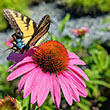
Plant Height: 24 inches
Flower Height: 3 feet
Spread: 24 inches
Sunlight: full sun
Hardiness Zone: 3a
Description:
A long flowering variety producing a profusion of ruby-pink flowers from mid-summer to early fall; a vigorous grower with sturdy stems, it really stands out in the late summer garden
Ornamental Features:
Ruby Star Coneflower has masses of beautiful lightly-scented crimson daisy flowers with brown eyes at the ends of the stems from mid summer to mid fall, which are most effective when planted in groupings. The flowers are excellent for cutting. Its pointy leaves remain green in color throughout the season.
Landscape Attributes:
Ruby Star Coneflower is an herbaceous perennial with an upright spreading habit of growth. Its medium texture blends into the garden, but can always be balanced by a couple of finer or coarser plants for an effective composition.
This is a relatively low maintenance plant, and is best cleaned up in early spring before it resumes active growth for the season. It is a good choice for attracting butterflies to your yard, but is not particularly attractive to deer who tend to leave it alone in favor of tastier treats. It has no significant negative characteristics.
Ruby Star Coneflower is recommended for the following landscape applications:
- Mass Planting
- General Garden Use
- Container Planting
Planting & Growing:
Ruby Star Coneflower will grow to be about 24 inches tall at maturity extending to 3 feet tall with the flowers, with a spread of 24 inches. It grows at a medium rate, and under ideal conditions can be expected to live for approximately 10 years. As an herbaceous perennial, this plant will usually die back to the crown each winter, and will regrow from the base each spring. Be careful not to disturb the crown in late winter when it may not be readily seen!
This plant should only be grown in full sunlight. It is very adaptable to both dry and moist locations, and should do just fine under typical garden conditions. It is considered to be drought-tolerant, and thus makes an ideal choice for a low-water garden or xeriscape application. It is not particular as to soil type or pH. It is highly tolerant of urban pollution and will even thrive in inner city environments. This is a selection of a native North American species. It can be propagated by division; however, as a cultivated variety, be aware that it may be subject to certain restrictions or prohibitions on propagation.
Ruby Star Coneflower is a fine choice for the garden, but it is also a good selection for planting in outdoor pots and containers. With its upright habit of growth, it is best suited for use as a 'thriller' in the 'spiller-thriller-filler' container combination; plant it near the center of the pot, surrounded by smaller plants and those that spill over the edges. It is even sizeable enough that it can be grown alone in a suitable container. Note that when growing plants in outdoor containers and baskets, they may require more frequent waterings than they would in the yard or garden.
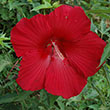
10" crimson blooms. Erect habit. Tolerates wet sites. USDA 5-9
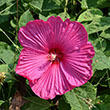
8" deep rose blooms with red eye. Compact. Tolerates wet sites. USDA 5-9

Height: 3 feet
Spacing: 30 inches
Sunlight: full sun
Hardiness Zone: 2a
Ornamental Features:
Shirley Temple Peony features bold lightly-scented white cup-shaped flowers with shell pink overtones and pink centers at the ends of the stems from late spring to early summer. The flowers are excellent for cutting. Its compound leaves remain green in color throughout the season.
Landscape Attributes:
Shirley Temple Peony is an herbaceous perennial with a more or less rounded form. Its medium texture blends into the garden, but can always be balanced by a couple of finer or coarser plants for an effective composition.
This is a relatively low maintenance plant, and should be cut back in late fall in preparation for winter. Deer don't particularly care for this plant and will usually leave it alone in favor of tastier treats. Gardeners should be aware of the following characteristic(s) that may warrant special consideration:
- Disease
Shirley Temple Peony is recommended for the following landscape applications:
- Mass Planting
- General Garden Use
Planting & Growing:
Shirley Temple Peony will grow to be about 30 inches tall at maturity, with a spread of 3 feet. When grown in masses or used as a bedding plant, individual plants should be spaced approximately 30 inches apart. The flower stalks can be weak and so it may require staking in exposed sites or excessively rich soils. It grows at a slow rate, and under ideal conditions can be expected to live for approximately 20 years. As an herbaceous perennial, this plant will usually die back to the crown each winter, and will regrow from the base each spring. Be careful not to disturb the crown in late winter when it may not be readily seen!
This plant should only be grown in full sunlight. It prefers to grow in average to moist conditions, and shouldn't be allowed to dry out. It is not particular as to soil pH, but grows best in rich soils. It is somewhat tolerant of urban pollution. This particular variety is an interspecific hybrid. It can be propagated by division; however, as a cultivated variety, be aware that it may be subject to certain restrictions or prohibitions on propagation.
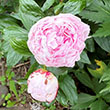
Height: 3 feet
Spacing: 30 inches
Sunlight: full sun
Hardiness Zone: 2a
Ornamental Features:
Sarah Bernhardt Peony features bold fragrant shell pink flowers at the ends of the stems from late spring to early summer. The flowers are excellent for cutting. Its compound leaves remain green in color throughout the season.
Landscape Attributes:
Sarah Bernhardt Peony is an herbaceous perennial with a more or less rounded form. Its medium texture blends into the garden, but can always be balanced by a couple of finer or coarser plants for an effective composition.
This is a relatively low maintenance plant, and should be cut back in late fall in preparation for winter. Deer don't particularly care for this plant and will usually leave it alone in favor of tastier treats. Gardeners should be aware of the following characteristic(s) that may warrant special consideration:
- Disease
Sarah Bernhardt Peony is recommended for the following landscape applications:
- Mass Planting
- General Garden Use
Planting & Growing:
Sarah Bernhardt Peony will grow to be about 30 inches tall at maturity, with a spread of 3 feet. When grown in masses or used as a bedding plant, individual plants should be spaced approximately 30 inches apart. The flower stalks can be weak and so it may require staking in exposed sites or excessively rich soils. It grows at a slow rate, and under ideal conditions can be expected to live for approximately 20 years. As an herbaceous perennial, this plant will usually die back to the crown each winter, and will regrow from the base each spring. Be careful not to disturb the crown in late winter when it may not be readily seen!
This plant should only be grown in full sunlight. It prefers to grow in average to moist conditions, and shouldn't be allowed to dry out. It is not particular as to soil pH, but grows best in rich soils. It is somewhat tolerant of urban pollution. This particular variety is an interspecific hybrid. It can be propagated by division; however, as a cultivated variety, be aware that it may be subject to certain restrictions or prohibitions on propagation.
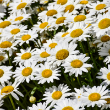
Plant Height: 24 inches
Flower Height: 3 feet
Spacing: 20 inches
Sunlight: full sun, partial shade
Hardiness Zone: 3b
Ornamental Features:
Becky Shasta Daisy has masses of beautiful white daisy flowers with yellow eyes at the ends of the stems from early to late summer, which are most effective when planted in groupings. The flowers are excellent for cutting. Its serrated narrow leaves remain dark green in color throughout the
season.
Landscape Attributes:
Becky Shasta Daisy is an herbaceous perennial with a mounded form. Its relatively fine texture sets it apart from other garden plants with less refined foliage.
This plant will require occasional maintenance and upkeep, and should be cut back in late fall in preparation for winter. It is a good choice for attracting butterflies to your yard. Gardeners should be aware of the following characteristic(s) that may warrant special consideration:
- Insects
Becky Shasta Daisy is recommended for the following landscape applications:
- Mass Planting
- General Garden Use
- Container Planting
Planting & Growing:
Becky Shasta Daisy will grow to be about 24 inches tall at maturity extending to 3 feet tall with the flowers, with a spread of 24 inches. When grown in masses or used as a bedding plant, individual plants should be spaced approximately 20 inches apart. The flower stalks can be weak and so it may require staking in exposed sites or excessively rich soils. It grows at a fast rate, and under ideal conditions can be expected to live for approximately 5 years. As an herbaceous perennial, this plant will usually die back to the crown each winter, and will regrow from the base each spring. Be careful not to disturb the crown in late winter when it may not be readily seen!
This plant does best in full sun to partial shade. It does best in average to evenly moist conditions, but will not tolerate standing water. It is not particular as to soil type or pH. It is highly tolerant of urban pollution and will even thrive in inner city environments. This particular variety is an interspecific hybrid. It can be propagated by division; however, as a cultivated variety, be aware that it may be subject to certain restrictions or prohibitions on propagation.
Becky Shasta Daisy is a fine choice for the garden, but it is also a good selection for planting in outdoor pots and containers. Because of its height, it is often used as a 'thriller' in the 'spiller-thriller-filler' container combination; plant it near the center of the pot, surrounded by smaller plants and those that spill over the edges. It is even sizeable enough that it can be grown alone in a suitable container. Note that when growing plants in outdoor containers and baskets, they may require more frequent waterings than they would in the yard or garden.
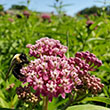
This monarch host plant produces pink blooms summer through fall. Requires moist soils. Self-seeder. Native. USDA 3-6
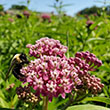
Plant Height: 3 feet
Flower Height: 4 feet
Spread: 32 inches
Sunlight: full sun partial shade
Hardiness Zone: 2a
Other Names: Butterfly Weed
Description:
A wonderful selection for attracting butterflies to garden beds and rain gardens; this upright selection features clusters of rosy-pink, fragrant flowers and green narrow foliage; a compact variety that is easy to grow, needing little to no maintenance
Ornamental Features:
Swamp Milkweed has fuchsia flat-top flowers with rose overtones at the ends of the stems from mid summer to early fall. The flowers are excellent for cutting. Its narrow leaves remain grayish green in color throughout the season.
Landscape Attributes:
Swamp Milkweed is an herbaceous perennial with an upright spreading habit of growth. Its medium texture blends into the garden, but can always be balanced by a couple of finer or coarser plants for an effective composition.
This is a relatively low maintenance plant, and is best cleaned up in early spring before it resumes active growth for the season. It is a good choice for attracting butterflies to your yard, but is not particularly attractive to deer who tend to leave it alone in favor of tastier treats. It has no significant negative characteristics.
Swamp Milkweed is recommended for the following landscape applications:
- Mass Planting
- General Garden Use
- Naturalizing And Woodland Gardens
- Bog Gardens
Planting & Growing:
Swamp Milkweed will grow to be about 3 feet tall at maturity extending to 4 feet tall with the flowers, with a spread of 32 inches. It tends to be leggy, with a typical clearance of 1 foot from the ground, and should be underplanted with lower-growing perennials. It grows at a medium rate, and under ideal conditions can be expected to live for approximately 10 years. As an herbaceous perennial, this plant will usually die back to the crown each winter, and will regrow from the base each spring. Be careful not to disturb the crown in late winter when it may not be readily seen!
This plant does best in full sun to partial shade. It is quite adaptable, prefering to grow in average to wet conditions, and will even tolerate some standing water. It is not particular as to soil type or pH. It is quite intolerant of urban pollution, therefore inner city or urban streetside plantings are best avoided. This species is native to parts of North America.
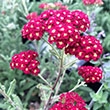
Rich strawberry red flowers with a yellow eye atop feathered foliage with a robust compact habit. USDA 3-8
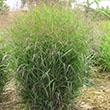
Thin, blue-green foliage is accented with silvery-white plumes. Dense, clumping. USDA 4-9
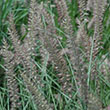
Dark, smoky rose-purple flower spikes. Deep green arching foliage. USDA 5-8
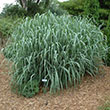
White, feathery plumes are tinged with purple. Rich-green foliage. USDA 5-9
39 found, showing page 1 of 3















